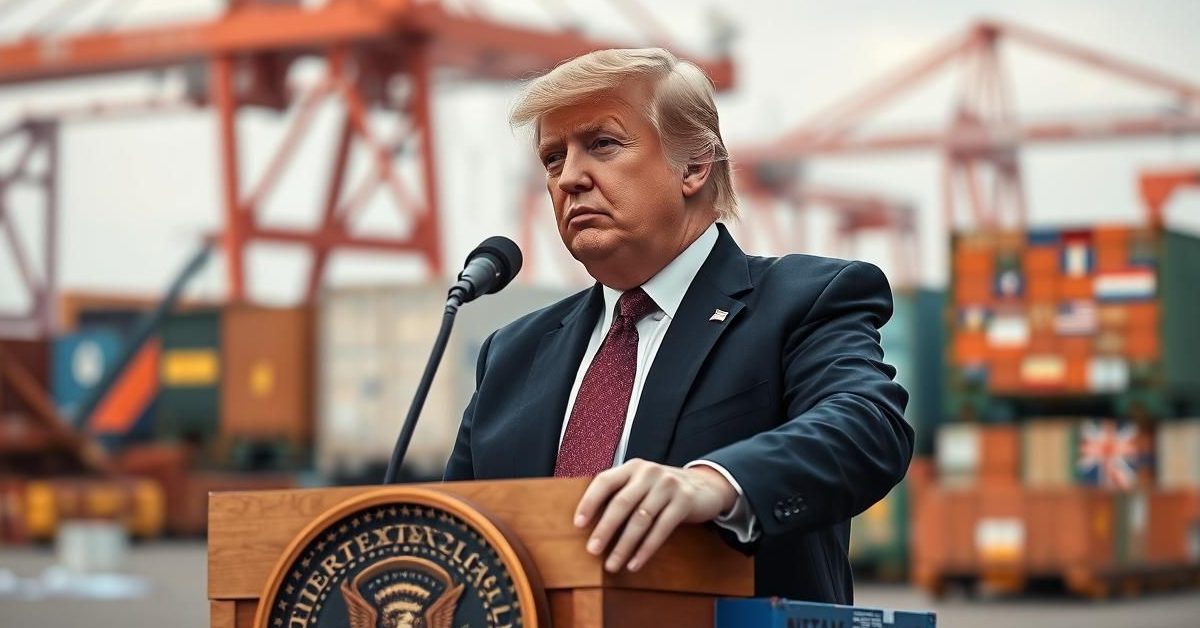Donald Trump has announced a significant new round of tariffs on 12 additional countries, effective August 1, with Myanmar and Lao People’s Democratic Republic facing the highest rates at 40%, following earlier tariffs on South Korea and Japan.
A New Wave of Global Tariffs
Following initial tariffs on South Korea and Japan, former President Trump has broadened his trade policy, imposing new duties on a dozen more nations. This move, which began on August 1, is part of a larger strategy to reshape global trade relationships.
Details of these new tariffs were communicated directly to the leaders of the affected countries through official letters. Trump also shared insights on Truth Social, describing these as a “wave of letters” aimed at rebalancing trade for the United States.
Trump’s Stance: Correcting “Unfair” Trade
The former president justified these new tariffs as a necessary measure to rectify what he calls years of “unfair” trade and non-tariff barriers. He argues that these practices have led to substantial trade deficits for the U.S.
Trump emphasized that such deficits pose a significant threat to both the American economy and national security. He also issued a stark warning against any retaliatory actions, stating that any increase in tariffs by other nations would be matched by additional duties from the U.S.
The Full List of New Tariff Rates
The recently announced tariffs cover a range of countries with varying rates:
- Myanmar – 40%
- Lao People’s Democratic Republic – 40%
- Cambodia – 36%
- Thailand – 36%
- Bangladesh – 35%
- Republic of Serbia – 35%
- Indonesia – 32%
- South Africa – 30%
- Bosnia and Herzegovina – 30%
- Japan – 25%
- South Korea – 25%
- Malaysia – 25%
- Kazakhstan – 25%
- Republic of Tunisia – 25%
It’s worth noting that the 25% rate for South Korea matches the initially announced figure from April 2. Japan’s rate, however, increased by one point from its prior announcement. An initial 10% cap on these reciprocal tariffs was set until July 9, allowing for negotiations.
Market Reaction and Ongoing Negotiations
The announcement of these new tariffs had an immediate impact, with the three main share indexes in the U.S. experiencing a decline on Monday. This reflects the market’s sensitivity to potential disruptions in global trade.
White House Press Secretary Karoline Leavitt commented on the situation, stating that “allies and rivals alike are now recalibrating how to respond” as Trump continues to double down on his “America First” trade agenda. So far, only two trade agreements related to these policies have been successfully reached, with Britain and Vietnam.
- Trump announced new tariffs on 12 countries, effective August 1, following earlier duties on South Korea and Japan.
- Myanmar and Lao People’s Democratic Republic face the highest tariff rate at 40%.
- Trump justified the tariffs as a way to correct “unfair” trade barriers and reduce U.S. trade deficits.
- He issued a warning that any retaliatory tariffs from other countries would result in additional U.S. duties.
- U.S. share indexes fell following the announcement, indicating market concern.
The global trade landscape continues to shift as nations assess the implications of these new tariffs and decide on their next steps.














